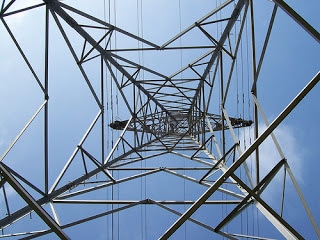What would Leonardo Da Vinci Have Done?
When Leonardo Da Vinci was obliged to finish off his first version of “Virgin of the Rocks” some 25 after being first commissioned, forensic evidence now shows that he totally rebuilt the framework of the painting which then allowed him to incorporate all the technical improvements of light, shade, expression and beauty that he had since mastered. No simple refining of minor details which is all he was paid to do; but a complete retrofit that is now some 528 years later one of the world’s finest paintings.
We are now faced with restoring an outdated and inefficient electrical grid and a supreme challenge to provide a one that meets the needs for a low carbon economy. Do we now rebuild the framework in order to achieve this? Or do we play around at the edge and go for incremental improvement hoping that it can be seamlessly joined together later? Sadly we are going for the later option in most regions of the world.
We are investing where the quickest ROI can be achieved commensurate with lowest technical risk and that in most cases is putting maximum investment in Smart Meters.We have the opportunity to rebuild the framework with the latest digital communications, control technology and analytical software; producing an Internet of Things (IOT) and test this out at full scale. Had the Da Vinci mindset been applied some 5 years ago we now would have been close to a total solution that could be transferred around the world. Yes we are working on it now, but its well behind where it should be today.
Should we be surprised that this solution was not adopted? Possibly not. Faced with a $2,000 billion investment this was always going to be influenced by eco-political matters, restricted by existing regulatory frameworks and a need to drastically change the architecture of the grid. These are formidable barriers to overcome in order to deliver a truly Smart Grid.

Our report The Smart Grid Business in 2011 to 2016 clearly shows that the breakdown of investment so far is heavily biased to Smart Meters, currently taking by far the largest single segment spend in the Smart Grid business in almost all countries in the world.
The spend on Smart Meters over the next 20 year period will be approximately $194 billion representing approximately 9% of the total budget and will reach its maximum peak by 2014. The latent potential for AMI complete with Smart Meters amounts to approximately 9%; while current sales took almost 40% of the pure Smart Grid market in 2010.
The prime reason that smart meters have run away with the investment dollars is that they are considered by the utilities as a relatively safe bet to provide a return on their investment. However the basic grid topology was built on stand-alone facilities offering limited, if any, interactive networked ‚Â intelligence and this is a more expensive and technically demanding challenge for Smart Grid and will require an investment of some $1,620 billion and is running some 10 years behind Smart Meter penetration.
This will mean that the full benefit of AMI will not be realized well after it has been installed, but more importantly it would appear that progress has been held back on other vitally important issues. Insufficient attention has been given to developing open communication standards and delivering a solution for protecting the grid from cyber attack.
About the Report
Memoori’s report The Smart Grid Business 2011 to 2016 is a definitive resource for Smart Grid market research, uniquely combining clearly defined market sizing statistics with financial analysis of M&A; investment and alliances.
At 182 pages with over 23 charts and tables, The Smart Grid Business 2011 to 2016 report filters out important conclusions, supported with facts, as to what is shaping the future of the Smart Grid industry. The report contains key information for all those managing, operating and investing in Smart Grid companies around the world. You can learn more at the reports website; http://memoori.com/smartgrid-2012



